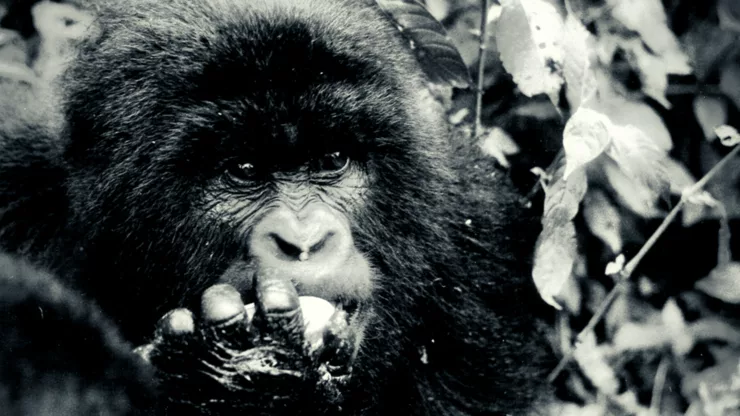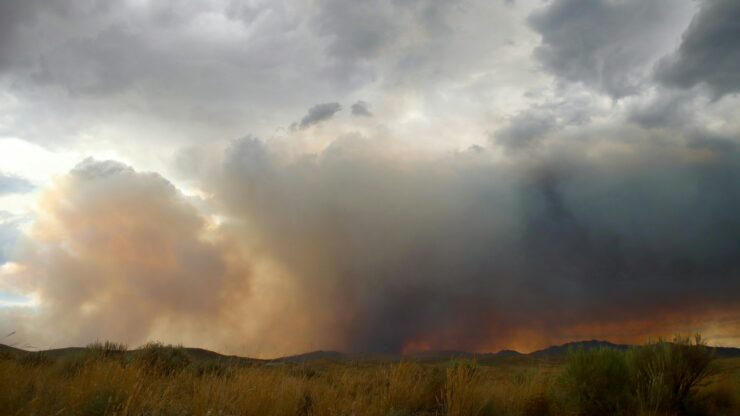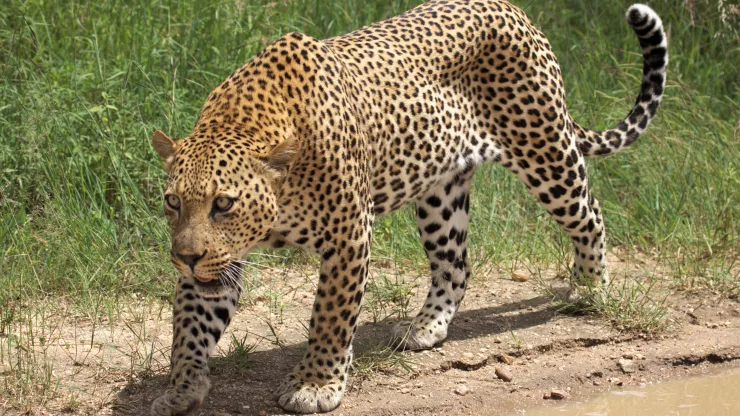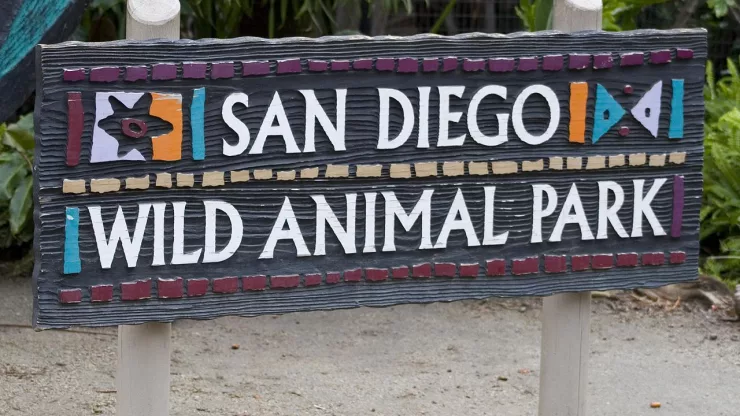The Congo Basin is a vast region located at the heart of Africa.
It is known for its dense tropical rainforest, which is home to a wide variety of species of plants and animals.
Unfortunately, this region is facing various threats, including deforestation, climate change, poaching, and illegal wildlife trade.
Despite these challenges, there are ongoing efforts to conserve the wildlife of the Congo Basin.
Jump to Section
Introduction
Overview of Congo Basin
The Congo Basin covers an area of about 3.7 million square kilometers and is located in Central Africa.
It includes parts of Cameroon, Central African Republic, Democratic Republic of Congo, Republic of Congo, Equatorial Guinea, Gabon, and South Sudan.
The Congo River flows through this region, providing water and nutrients to the surrounding forests.
The Congo Basin is home to the second-largest rainforest in the world after the Amazon.
Importance of Congo Basin’s Wildlife
The wildlife of the Congo Basin is of immense ecological, cultural, and economic importance.
It provides ecosystem services such as carbon sequestration, soil conservation, and water purification.
It also supports the livelihoods of millions of people who depend on forest resources for food, medicine, and other needs.
Biodiversity of Congo Basin
Flora of Congo Basin
The Congo Basin is home to over 10,000 species of plants, including many endemic species.
The rainforest is dominated by tall trees, but there are also shrubs, herbs, and vines.
Some of the notable plant species found in the Congo Basin include the African mahogany, the ebony tree, and the okoume tree.
Fauna of Congo Basin
The Congo Basin is home to a diverse array of animal species, including mammals, birds, reptiles, amphibians, and invertebrates.
Mammals
The Congo Basin is home to over 400 species of mammals, including some of the most iconic African animals such as gorillas, chimpanzees, elephants, and leopards.
There are also lesser-known species such as the okapi, the bonobo, and the forest buffalo.
Birds
The Congo Basin is home to over 1,000 species of birds, including the African grey parrot, the great blue turaco, and the Congo peafowl.
Reptiles
There are over 200 species of reptiles in the Congo Basin, including the African rock python, the dwarf crocodile, and the Gaboon viper.
Amphibians
There are over 300 species of amphibians in the Congo Basin, including the African giant toad, the Congo caecilian, and the African bullfrog.
Invertebrates
The Congo Basin is home to a wide variety of invertebrates, including butterflies, beetles, ants, and termites.
Threats to Congo Basin’s Wildlife
Deforestation
One of the biggest threats to the wildlife of the Congo Basin is deforestation.
The forests are being cleared for agriculture, logging, and mining, leading to habitat loss and fragmentation.
This has a significant impact on the wildlife, as it disrupts their natural habitat and makes them more vulnerable to poaching and other threats.
Climate Change
Climate change is also a significant threat to the wildlife of the Congo Basin.
Rising temperatures and changing rainfall patterns are affecting the forests, making them more vulnerable to fires and other disturbances.
This can have a devastating impact on the wildlife, as it disrupts their food sources and habitat.
Poaching and Illegal Wildlife Trade
Poaching and illegal wildlife trade are also major threats to the wildlife of the Congo Basin.
Animals such as elephants, gorillas, and pangolins are hunted for their meat, ivory, and other body parts, which are then sold on the black market.
Mining and Oil Exploration
Mining and oil exploration are also significant threats to the wildlife of the Congo Basin.
These activities can lead to habitat destruction, pollution, and other environmental impacts that can harm the wildlife.
Conservation Efforts in Congo Basin
Protected Areas
There are several protected areas in the Congo Basin, including national parks, wildlife reserves, and community forests.
These protected areas help to conserve the wildlife and their habitat, providing a safe haven for many species.
Community-Based Conservation
Community-based conservation is also an essential tool for conserving the wildlife of the Congo Basin.
Local communities are often the first line of defense against threats such as poaching and deforestation.
By involving these communities in conservation efforts, it is possible to promote sustainable use of forest resources and protect the wildlife.
International Support
International support is also critical for conserving the wildlife of the Congo Basin.
Organizations such as the World Wildlife Fund, the Wildlife Conservation Society, and the Rainforest Foundation work to support conservation efforts in the region.
Challenges and Limitations
Conservation efforts in the Congo Basin face several challenges and limitations, including limited funding, political instability, and weak law enforcement.
These challenges make it difficult to effectively protect the wildlife and their habitat.
Conclusion
Call to Action
The wildlife of the Congo Basin is facing significant threats, but there are ongoing efforts to conserve it.
To protect this important ecosystem and its inhabitants, it is essential to take action.
This can include supporting conservation organizations, promoting sustainable forest management practices, and reducing demand for illegal wildlife products.
Future Prospects for Congo Basin’s Wildlife.
The future of the wildlife of the Congo Basin remains uncertain.
However, by continuing to invest in conservation efforts and raising awareness about the importance of this unique ecosystem, it is possible to ensure that it remains a vital part of Africa’s biodiversity.
FAQ
What is the Congo Basin?
The Congo Basin is a region located in Central Africa that includes parts of Cameroon, Central African Republic, Democratic Republic of Congo, Republic of Congo, Equatorial Guinea, Gabon, and South Sudan.
It is home to the second-largest rainforest in the world after the Amazon.
What kind of animals live in the Congo Basin?
The Congo Basin is home to a wide variety of animal species, including gorillas, chimpanzees, elephants, leopards, okapis, bonobos, forest buffalos, African grey parrots, great blue turacos, Congo peafowls, African rock pythons, dwarf crocodiles, Gaboon vipers, African giant toads, Congo caecilians, butterflies, beetles, ants, and termites.
What are the threats to the wildlife of the Congo Basin?
The wildlife of the Congo Basin is facing several threats, including deforestation, climate change, poaching, illegal wildlife trade, mining, and oil exploration.
What can be done to protect the wildlife of the Congo Basin?
To protect the wildlife of the Congo Basin, it is essential to support conservation efforts, promote sustainable forest management practices, and reduce demand for illegal wildlife products.
Local communities, conservation organizations, and international support are all critical in the fight to conserve this unique ecosystem.
I’m a nature enthusiast and creator of Metro Wilds and have spent years exploring the great outdoors.
With a passion for environmental conservation and sustainability, I have dedicated my career to writing about the beauty and wonders of nature, as well as the threats facing our planet.
Contact me at [email protected] for assistance.





